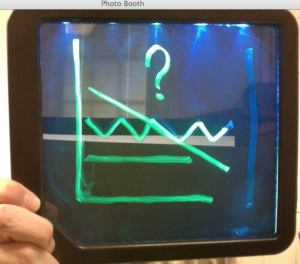Yours truly reviewed this morning’s March job reports . . .
So what were the expectations?
CNN: Noted on a whiteboard that the expectation was for 216,000 jobs created in March compared to the actual 192,000, and that, “experts” had predicted 6.6% unemployment, but the figure remained at 6.7%.
CNBC: Economists polled by Reuters had expected employment to increase 200,000 last month and the unemployment rate to dip to 6.6 %. The U.S. created 192,000 new jobs in March after a gain of 197,000 in February, according to the Labor Department. The unemployment rate was unchanged at 6.7 percent.
Politico: Friday’s March jobs report, the first of spring, which showed a lower-than-expected gain of 192,000 — Wall Street traders were looking for something closer to 300,000 — and an economy not losing speed but not exactly revving up for the run to the November midterm elections.
One Wall Street personage on the CNBC panel described the March jobs report, despite not meeting expectations and being insufficient for a strong recovery, as a “Goldilocks” report . . . not too good, not too bad . . . “!!?? This guy needs to go back to remedial fairytale. Goldilocks was all about something being “just right.”
Speaking of Goldilocks . . . the Wall Street Journal reports * on comments from Fed Chairman Janet Yellen and other observations:
“While there has been steady progress, there is also no doubt that the economy and the job market are not back to normal health,”
Hiring has accelerated since December. But Friday’s report showed that payrolls grew an average of 178,000 a month so far this year, slower than last year’s average of 194,000 a month.
Last month, employment rose in professional and business services, including temporary work, health care and mining. The construction sector, which can be sensitive to the weather, added 19,000 jobs. Manufacturing shed 1,000 positions.
But there are still signs of substantial slack across the labor market.
About 10.5 million Americans are officially unemployed. More than a third of them—3.7 million—have been jobless for more than six months.
The labor-force participation rate—the share of working-age adults who have a job or are looking for work—rose to 63.2% in March. The figure remains near a 3½-decade low, partly reflecting retirement of baby boomers but also because frustrated job-seekers have simply dropped out of the work force.
Meanwhile, 7.4 million were working part time but would have preferred a full-time job, an increase of 225,000 from the prior month. “The existence of such a large pool of ‘partly unemployed’ workers is a sign that labor conditions are worse than indicated by the unemployment rate,” Ms. Yellen said.
A broader measure of unemployment that includes people working part-time who want a full-time job and others who are marginally attached to the workforce edged higher to 12.7% in March.
DLH with R Mall
* The selected material is set forth to this extent for the purposes of political commentary, criticism and education.

